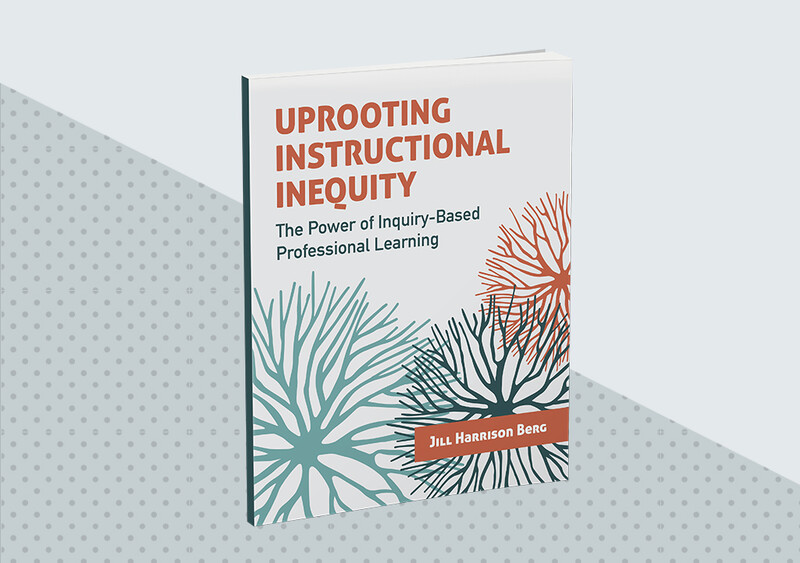In recent decades, many schools have accelerated their efforts to ensure every student receives the education they deserve by expanding their focus beyond instruction. They've built school culture routines that increase sense of belonging, taught students to navigate conflict and practice self-regulation strategies, and established new channels for student voice. They've also dedicated personnel and other resources toward getting students to school on time; ensuring they have school supplies and tech connectivity; providing food; connecting them with community services; or even arranging for clothing, dental checkups, and eyeglasses.
While addressing these basic and social-emotional needs is essential, schools must not lose focus on the core work of teaching and learning. The fact that schools are stretching their mission and resources to take care of basic well-being needs is a symptom of a larger social justice problem. We need to address these basic needs while also working to raise up a generation academically prepared to solve problems and develop ideas in ways the past generations have not and educators of today can't imagine. Dismantling social injustice for tomorrow requires effective teaching and learning for every student today. Unfortunately, however, schools with the greatest need for a laser focus on teaching and learning are often the ones with the greatest number of distractions from it.
One way leaders can ensure they don't lose sight of teaching and learning while meeting urgent learner readiness needs is by convening an instructional leadership team, or ILT, and fiercely protecting its focus on instruction.
All Hands on Deck
In too many schools, the decisions that determine the quality of teaching and learning are made by a single individual or a small team of administrators, whose thinking is heavily influenced by the skin they're in and how they experience the world. This model of decision-making is neither effective for diverse student populations nor sustainable for the leaders. The complex work of meeting the needs of every student requires multiple perspectives and an all-hands-on-deck approach.
In recent decades, ILTs have been promoted within many of the nation's largest urban districts. They are a common anchor found in fast-improving schools, and their establishment is a frequent recommendation for school improvement planning (Berg & Parad, 2023). ILTs can foster equitable school outcomes by engaging a rich complement of voices in the school-level decisions most critical to instructional quality. They also foster shared responsibility for student learning outcomes throughout the school. By taking a schoolwide view of student work and other data, these teams can engage in cycles of inquiry that reveal who the school isn't working for and empower educators to collaborate in retooling the systems creating these results.
Dismantling social injustice for tomorrow requires effective teaching and learning today.
But not all ILTs are created equal. When they are not structured for success or supported to establish collaborative culture, they fail to achieve the results they seek. In my role as a coach for ILTs for more than 20 years, my approach is to guide leaders to ensure their ILTs are strategic, smart, and supported.
Strategic Teams
Effective ILTs are strategically staffed with representative members of each of the school's other instructional teams, whether by grade level, content area, or program. Through this design, there can be routine two-way communication between the ILT and every teacher in the school, as the ILT's findings and responses to schoolwide trends can be reported via their teams, and team members' intel about the student experiences behind those patterns can be brought back to the ILT. Families send their students to school to learn; an ILT keeps its eye on whether—and how well—this is happening for every student.
Ideally, ILTs communicate and deliberately coordinate with other schoolwide teams to bolster their impact. While the ILT is fine-tuning grade-level expectations in writing, for example, a family engagement team might be focused on how these expectations can be discussed as part of family conference routines. And, when the school climate team is working to support teachers to create a productive learning environment in each classroom, the school's definition of high-quality teaching, produced by the ILT, is an essential guide. Assembling schoolwide teams and coordinating communication among them is a strategic move that can both bolster an ILT's impact and prevent it from taking detours less focused on the core work of instruction.
Smart Teams
Effective ILTs have members who collectively bring the requisite knowledge, skills, dispositions, and experiences for the work at hand. A well-designed ILT convenes 6–12 members who represent a range of experiences and skills: instructional expertise, facilitation skills, data analysis, special education, multilingual fluency, parenting, cultural diversity, etc. Ideally, the ILT will include perspectives that represent those in the student body, and to do so, ILTs need not be limited to core instructional staff. Some ILTs draw membership strategically from the ranks of paraprofessionals, specialists, community partners, and others adjacent to instruction.
Convening this great range of perspectives raises the potential to elevate the conversation and make the team smarter—within the right culture. Savvy leaders will work alongside team members to recognize their own assumptions, hear previously overlooked counternarratives, gain new insights about their own identities, and push each other's thinking. By assembling a team with such diversity of thought, and committing to sharpening their skills for honest dialogue, decisions will be more enlightened.
Supported Teams
Effective ILTs have sufficient protected time for their work, and its members are compensated through pay or release time. Providing compensation not only increases participation for those who might not otherwise be able to join (due to childcare costs or other paid commitments they may choose instead), but it also validates their professional expertise and experience.
In addition, ILTs should be bolstered with capacity-building supports. Some ILTs provide members with professional books, podcasts, videos, or even an ASCD digital membership. The resources should strengthen the team's knowledge and build shared language about the content of their improvement focus (e.g., academic conversations) or the process of their team (e.g., building consensus). When engagement with these readings is built right into the structure of the meeting, they can double as team-building activities in support of establishing relational trust. Where possible, supporting ILTs with leadership coaching and occasional retreats are proactive ways to keep ILTs on track and productive.
Long Road to Justice
While working in today's schools, we may encounter students who are hungry, unhealthy, and hurting. Yes, we need to feed them and nurture them, but there will be no end to the injustices producing these conditions unless the root causes of hunger and suffering are also addressed. By helping a school to maintain its focus on support and accountability for high-quality teaching and learning, ILT members are playing the long game: They're ensuring another generation doesn't leave school ill-equipped to create the future we all need.
Uprooting Instructional Inequity
Jill Harrison Berg offers a comprehensive guide to help school and teacher leaders amplify the power of collaborative inquiry as a means for identifying, interrogating, and addressing instructional inequity.










